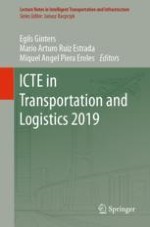This proceedings volume explores the latest advances in transport and logistics, while also discussing the applications of modern information technologies, telecommunications, electronics, and prospective research methods and analyzing their impacts on society and the environment, which in turn determine the future development of these technologies. The book is intended for a broad readership, including transport and logistics business planners and technical experts, leveraging industry knowledge and facilitating technology adoption in promising business regions and transit corridors such as Ukraine, Kazakhstan, and others.
The authors, who include policy planners and crafters as well as education and training professionals, address various types of intermodal transport such as rail, road, maritime, air, etc.
